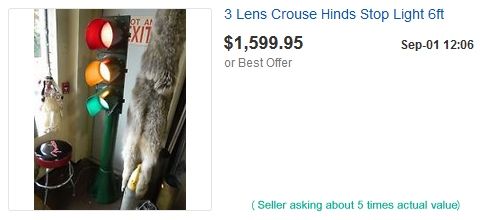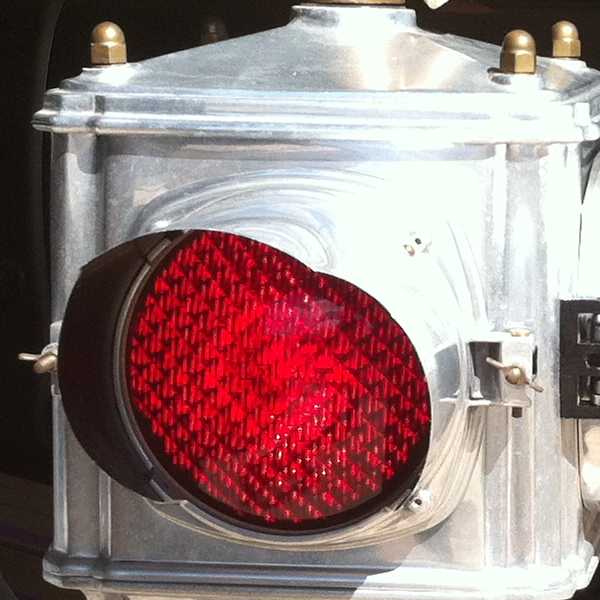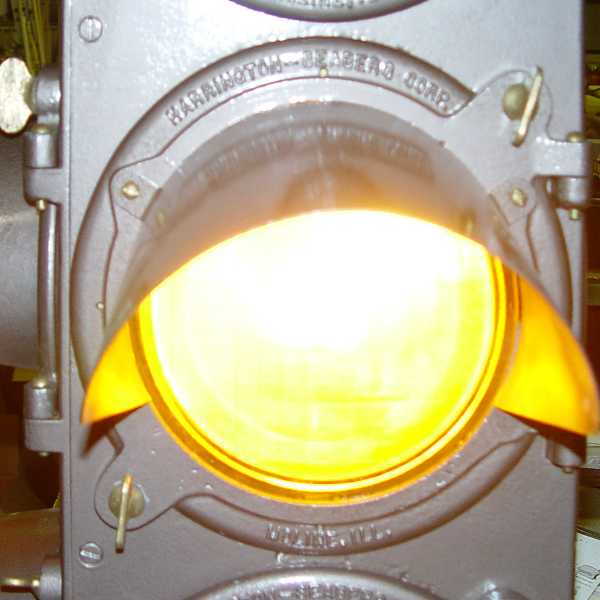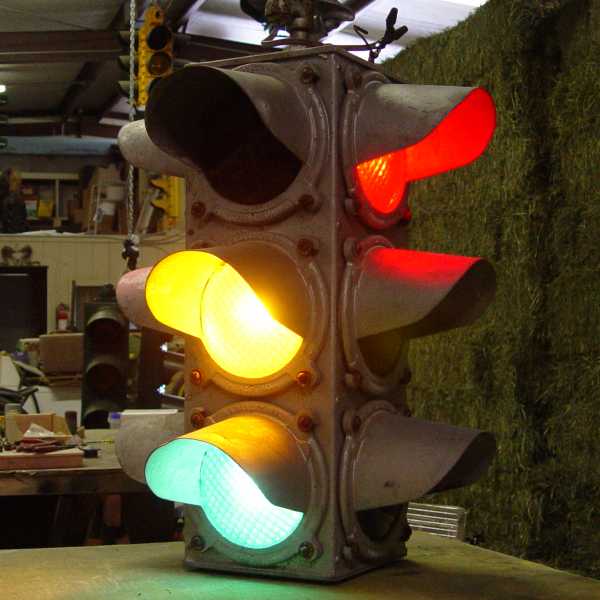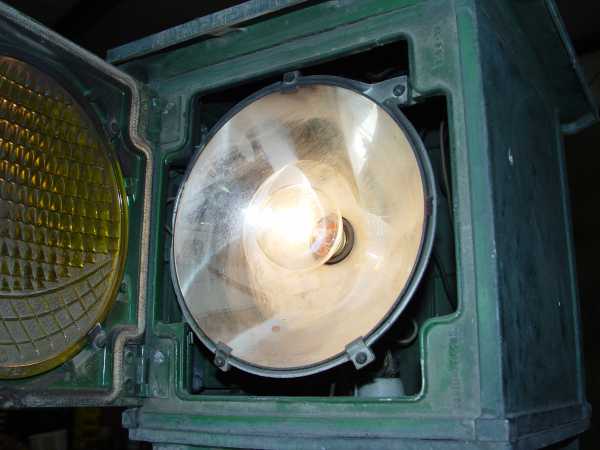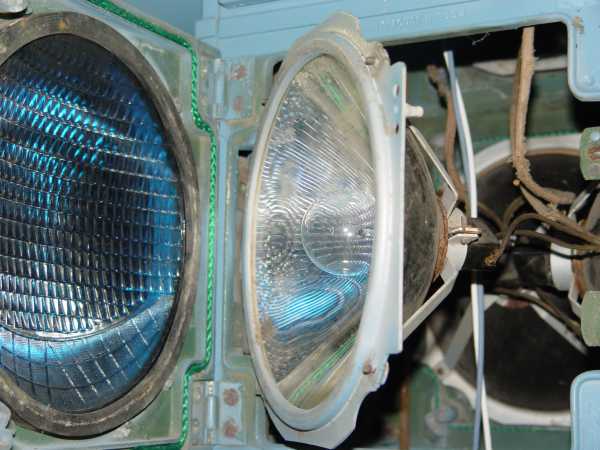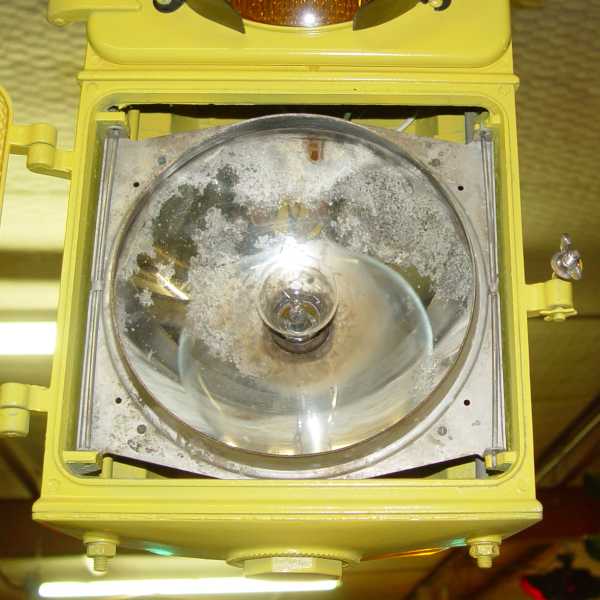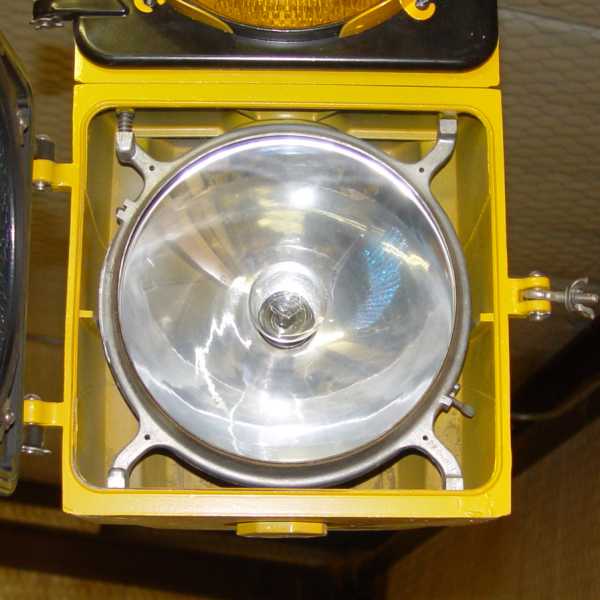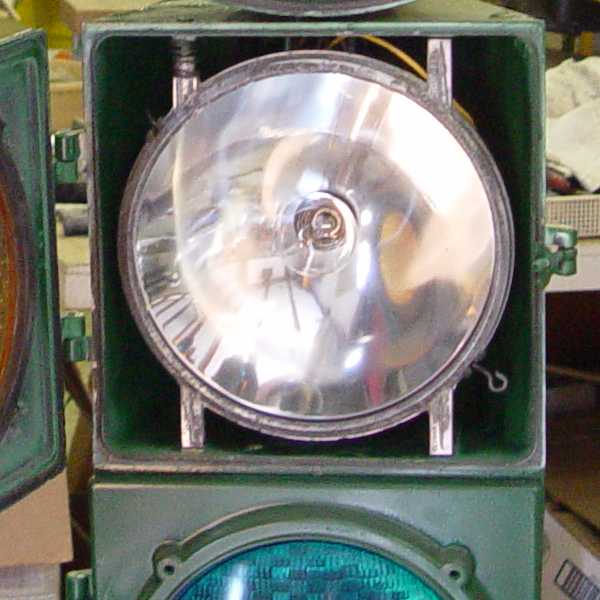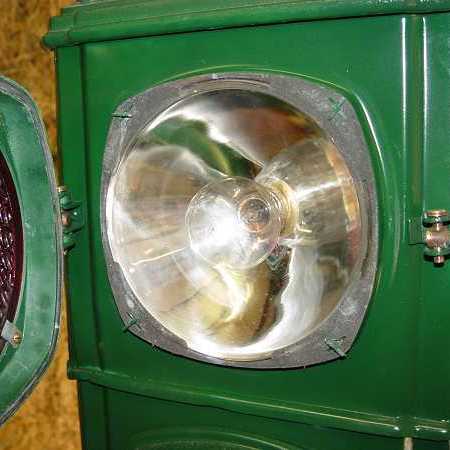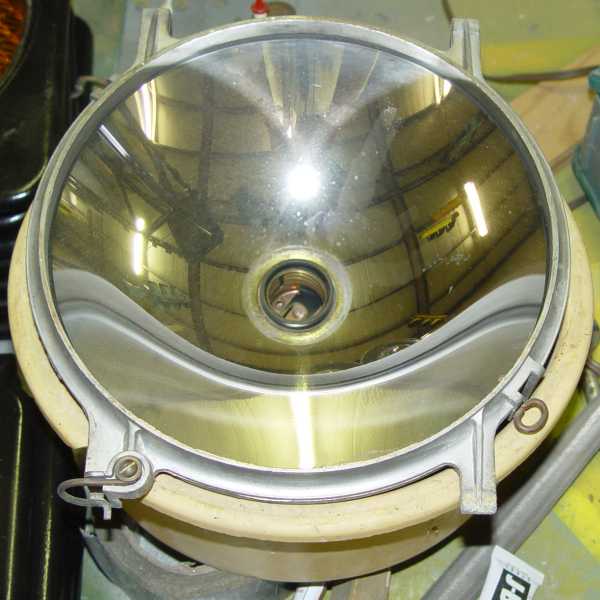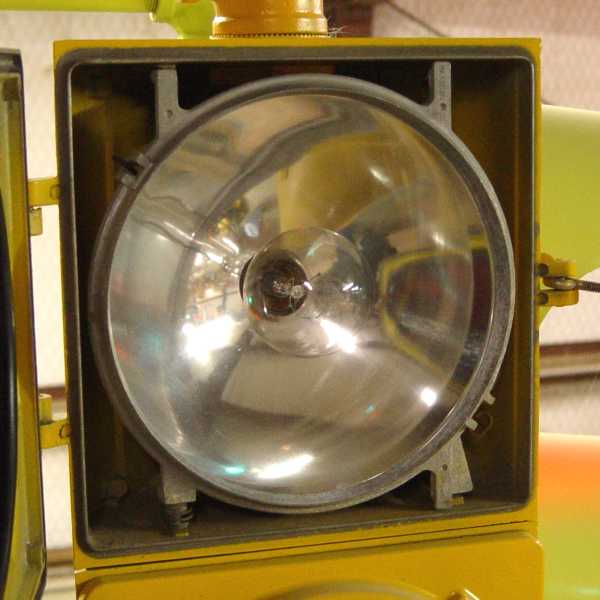Tips on Buying and Selling Traffic Signals
|
Door attached solely with winged machine screws.
|
Hinged door, secured with thumb screws.
|
|
Classic Type D reflector with latch tab.
|
Reflector mounted in stamped aluminum frame.
|
|
|
"Cereal bowl" reflectors.
|
Later style reflector.
|
Streamline reflectors attached to signal bodies using rubber gaskets.
Lenses and visors clamped into the doors that snapped over the lens gaskets.

|
SSC version reflector held in by four spring loaded tabs.
|
Early reflector with pigtail wire hinge (lower left).
|
